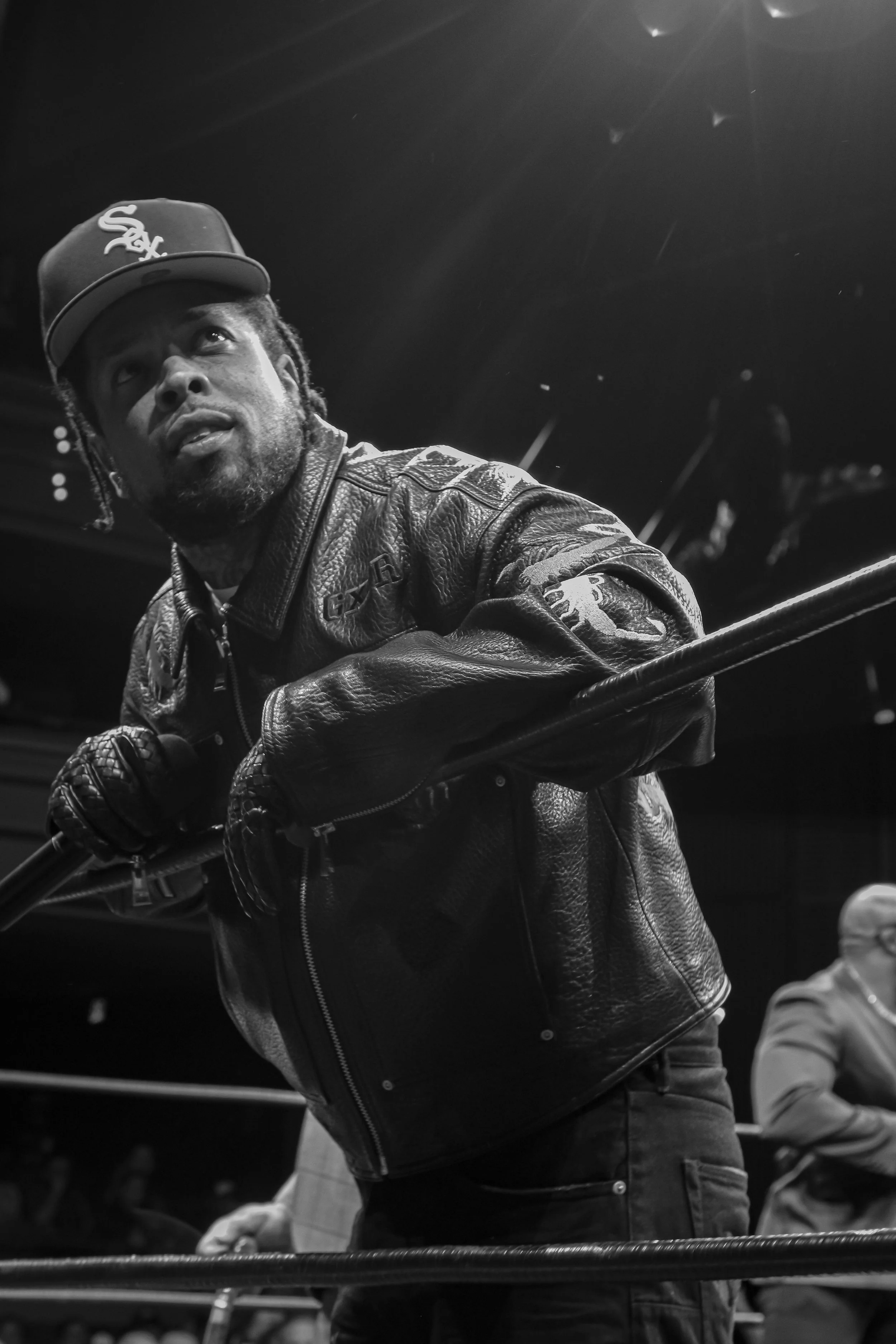The Cease and Desist Heard Around the Culture: Westside Gunn legacy continues
For years, hip-hop and wrestling have existed in two parallel worlds both being loud, braggadocious, and built on storytelling. Every entrance, every promo, every bar is designed to leave an impression. But no one has merged those worlds quite like Westside Gunn.
While he wasn’t the first rapper to reference wrestling, Gunn made it a cultural cornerstone not a gimmick. His album covers, track titles, and production choices all serve as love letters to an art form that shaped his personality long before fame. Every project from Hitler Wears Hermes to Pray for Parisalmost feels like a pay-per-view main event, designed with meticulous flair and attention to detail. The ring ropes, the grit, the glory; it’s all there, and it’s all real.
In today’s climate, where most artists chase whatever’s trending, Gunn’s consistency stands out. He didn’t just name-drop wrestlers or wear a vintage tee for aesthetics; he lived it. You’d catch him front row at AEW, WWE, or indie events, proudly showing love to the wrestlers that inspired his work. He didn’t ask for validation; he was already part of the culture.
Westside Gunn: The Bridge Between Hip-Hop & Wrestling Culture
When other rappers started sprinkling wrestling bars into their lyrics, it was clear where that influence came from. Gunn made it cool to love pro wrestling again. For fans like me who grew up watching it religiously; he became a symbol of how hip-hop could embrace something nostalgic, gritty, and theatrical without losing its authenticity.
That’s why the recent news hit like a chair shot. Reports surfaced that Westside Gunn was removed from his $5,000 seats at Monday Night Raw in his hometown of Buffalo and later hit with a cease and desist from WWE, warning him not to use any of their copyrighted content moving forward. For someone who’s done so much to bridge these two worlds, it felt like a low blow.
This wasn’t an opportunist milking a brand for profit, this was a genuine fan, an ambassador of the art, who turned his love for wrestling into creative fuel that inspired countless others. His work introduced a new audience to the beauty of pro wrestling; the pageantry, the storytelling, the dedication behind the spectacle. And yet, instead of a handshake, he got a legal letter.
As someone who’s been a die-hard wrestling fan since childhood, seeing this unfold is heartbreaking. It’s almost tradition in my household, whenever we spot Westside Gunn ringside, we point him out. He’s one of us. He represents that part of fandom that never faded, even when wrestling wasn’t “cool.”
He’s the embodiment of what happens when culture and authenticity collide. Every verse feels like an entrance theme. Every album feels like a WrestleMania moment.
Bigger Than the Ring
No cease and desist can erase the legacy he’s built. Westside Gunn helped make wrestling culture fashionable again. He’s a creative visionary who understood that wrestling and hip-hop share the same DNA; both are about performance, confidence, and the art of making people feel something.
Whether or not WWE sees it, Gunn’s influence has already reshaped how artists approach wrestling references, aesthetics, and even merchandise. From independent promotions giving him shout-outs to wrestlers using his music for entrances, his impact is undeniable.
What’s Better Than 3 Ropes?
At the end of the day, this situation says more about corporate oversight than about culture. Because if anyone deserves a front-row seat at wrestling’s table, it’s Westside Gunn; the man who turned passion into performance and made both worlds collide in prestigious fashion.






